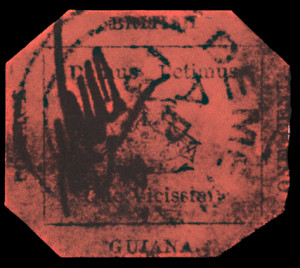To Join or Not to Join: Is That A Question?
By Richard L. Sine
 Should you join a local stamp club (or help start one if none is nearby), a specialty group for people who collect the same as do you (i.e., alligators on stamps, postal history of Pit Hole City, PA, etc.) or a national all-purpose organization such as the American Philatelic Society or the Royal Philatelic Society of Canada?
Should you join a local stamp club (or help start one if none is nearby), a specialty group for people who collect the same as do you (i.e., alligators on stamps, postal history of Pit Hole City, PA, etc.) or a national all-purpose organization such as the American Philatelic Society or the Royal Philatelic Society of Canada?
Post those questions to stamp collectors and you will hear two responses: a resounding YES, or a low murmur that isn’t quite a “no,” but you aren’t certain. And, of course, there is no reason to parade around the kingdom carrying a placard: “Don’t Join!”
Let’s look at key reasons to join any stamp organization, no matter what its reach:
- Ability to associate with others who share your interest
- Learn more about stamp collecting than if you do not join
- Take advantage of services only open to members, or at a lesser fee than members are charged. Such benefits include being able to read current issues of the group’s publication, notification of philatelic events (particularly those nearest you), and a safe(r) environment within which to buy/sell or exchange stamps.
How about some “lesser” reasons?
- Just to receive the periodicals … really, then, you not are “joining” so much as subscribing to a periodical.
- To be able to tell others you are a member … yes, I have seen that in the just-under 50 years since I first paid a membership fee. I also have seen a few collectors whose collecting interests include the number of memberships.
Don’t join merely to “support” [fill in organization’s name here]. If you wish to support, send an annual check as a donation. Particularly relative to smaller groups — both local clubs and specialty groups — non-participating members then leave it to those volunteers to pick up the slack for you … and what appears to be a “membership” of 100 really is one of only 35! To me, passive membership, unless of course there are health issues, is deception. You may put the decal on your auto bumper, but you bought it rather than earned it.
It is the rare stamp organization that does not welcome those who offer to be on committees, help at events, run for office, and on and on.
Philately is going through some drastic changes. In the first place, postal services are carrying far less mail and, therefore, there are far fewer stamps. The number of philatelic periodicals continues to dwindle, both in number and in size; some large stamp shows are no more; and I could add more tear-jerking examples.
Digital media, complete with “memberships” of sorts, dot the environment. I remember when each of VSC’s predecessors burst forth. What we see here now is not the same as what I remember from a long time ago. And, the better philately-by-keyboard approaches will prosper over time just as have stamp organizations.
Make your decision on the basis of what is best for you. As a hobby, this is for your recreation. Enjoy it your way, for your reasons … because, most importantly, stamp collecting is for you to enjoy!





